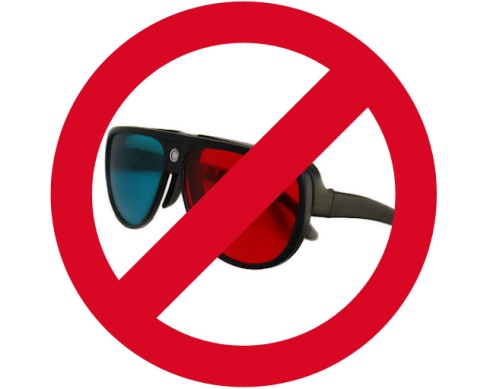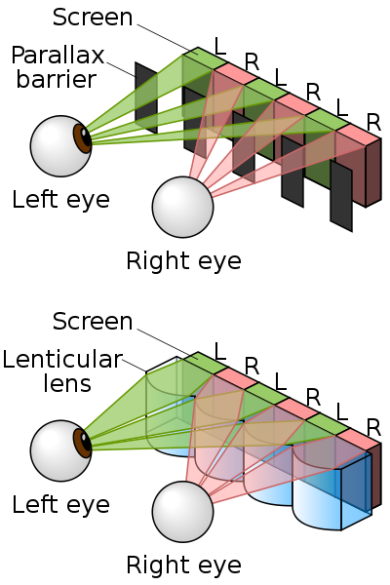Autostereoscopy is any method of displaying stereoscopic images (adding binocular perception of 3D depth) without the use of special headgear or glasses on the part of the viewer. Because headgear is not required, it is also called “glasses-free 3D” or “glassesless 3D”. There are two broad approaches currently used to accommodate motion parallax and wider viewing angles: eye-tracking, and multiple views so that the display does not need to sense where the viewers’ eyes are located. Examples of autostereoscopic displays technology include lenticular lens, parallax barrier, volumetric display, holographic and light field displays.
Many organizations have developed autostereoscopic 3D displays, ranging from experimental displays in university departments to commercial products, and using a range of different technologies. The method of creating autostereoscopic 3D using lenses was mainly developed in 1985 by Reinhard Boerner at the Heinrich Hertz Institute (HHI) in Berlin. The HHI was already presenting prototypes of single-viewer displays in the 1990s. Nowadays, this technology has been developed further mainly by European companies. One of the best-known 3D displays developed by HHI was the Free2C, a display with very high resolution and very good comfort achieved by an eye tracking system and a seamless mechanical adjustment of the lenses. Eye tracking has been used in a variety of systems in order to limit the number of displayed views to just two, or to enlarge the stereoscopic sweet spot. However, as this limits the display to a single viewer, it is not favored for consumer products.
Currently, most flat-panel solutions employ lenticular lenses or parallax barriers that redirect imagery to several viewing regions; however, this manipulation requires reduced image resolutions. When the viewer’s head is in a certain position, a different image is seen with each eye, giving a convincing illusion of 3D. Such displays can have multiple viewing zones, thereby allowing multiple users to view the image at the same time, though they may also exhibit dead zones where only a non-stereoscopic or pseudoscopic image can be seen, if at all.
The principle of the parallax barrier was independently invented by Auguste Berthier, who published first but produced no practical results, and by Frederic E. Ives, who made and exhibited the first known functional autostereoscopic image in 1901. About two years later, Ives began selling specimen images as novelties, the first known commercial use. Nearly a century later, Sharp developed the electronic flat-panel application of this old technology to commercialization, briefly selling two laptops with the world’s only 3D LCD screens. These displays are no longer available from Sharp but are still being manufactured and further developed from other companies like Tridelity and SpatialView. Similarly, Hitachi has released the first 3D mobile phone for the Japanese market under distribution by KDDI. In 2009, Fujifilm released the Fujifilm FinePix Real 3D W1 digital camera, which features a built-in autostereoscopic LCD display measuring 2.8″ diagonal. Nintendo has also implemented this technology on its latest portable gaming console, the Nintendo 3DS.


really excellent beneficial article